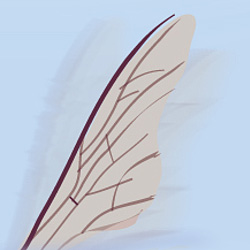
Researchers from the University of Bath are undertaking research into the aerodynamics needed to fly very small unmanned aircraft that can be used in a variety of operations.
These micro air vehicles would be up to six inches long and equipped with sensors and cameras. Their size and mobility would enable them to carry out a variety of military missions, including reconnaissance and surveillance, targeting and bio-chemical sensing. They are unlikely to be used directly as weapons.
The aircraft could also make non-military tasks easier, such as traffic monitoring, border surveillance, fire and rescue operations, wildlife surveys, aerial photography, monitoring of seismic activity and hazardous substance detection.
The smaller an aircraft is made, the slower is its speed and the more it is vulnerable to high winds. This means that existing micro air vehicles can only fly for short periods at low speed and are too large to carry out fine maneuvers. But the Department of Mechanical Engineering at the University of Bath is now carrying out five research projects over the next two years to find ways of overcoming these problems.
One approach they are working on is to get the micro air vehicles to flap their wings in a similar way to insects such as bees, flies or birds. By studying animals' motion, the researchers hope to match the efficiency of nature and keep smaller airplanes in the sky for long enough to carry out their tasks. Micro air vehicles, which weigh about 1.75 ounces, must be capable of staying aloft for up to an hour and flying a few miles.
In this the team is breaking new ground: while naturalists have studied bird and insect flight for more than half a century, our basic understanding of their aerodynamics is limited. The scientific knowledge of aircraft flight does not apply easily on a small scale and scientists do not have a full understanding of the stamina of a bee or the agility of a dragonfly.
Flapping wings is not the only option the team is pursuing: another approach is to use micro jet engines which send out small puffs of air which push the airplane forward.
If the research is a success then the micro air vehicles could be used as spy planes, sending back clear detailed video footage of battlegrounds, allowing commanders to use their troops most effectively and avoiding the need for human scouts to risk their lives. They can also land on the roof of enemy vehicles and mark them for future attack or as carriers of chemical or biological weapons.
Researchers at other universities are developing the computer software and hardware needed for the micro air vehicles to be able to travel to preset destinations and avoid obstacles, without having to be guided remotely.
The University of Bath research project has received funding from a variety of sources including the Engineering and Physical Sciences Research Council (EPSRC), Qinetiq, and BAE SYSTEMS, the Ministry of Defense, the US Air Force Office of Scientific Research (AFOSR).
Dr Ismet Gursul, the Head of the Aerospace Subgroup in the University of Bath's Department of Mechanical Engineering, who is leading the research, said: "The main problems with the micro air vehicles we are looking at are poor lift, inefficient propulsion and unsteady aerodynamics.
"We are looking for the most efficient way of flying, and the rapid flapping of a flexible wing is one of these, and in this respect we are imitating nature and the flight of insects and birds"